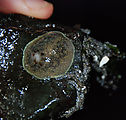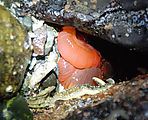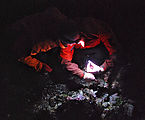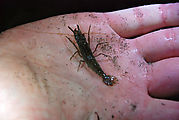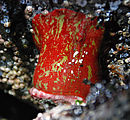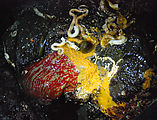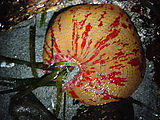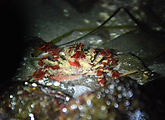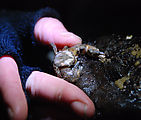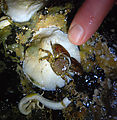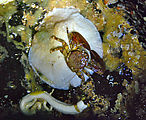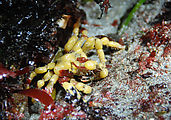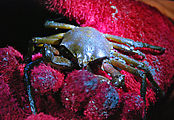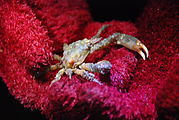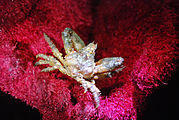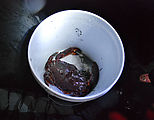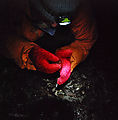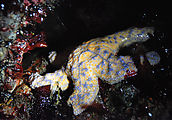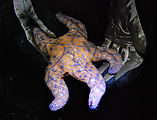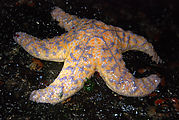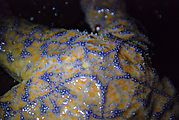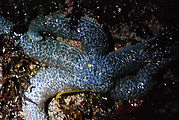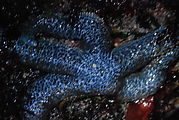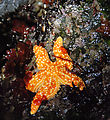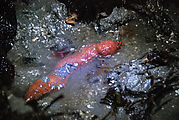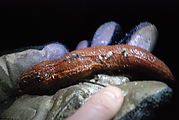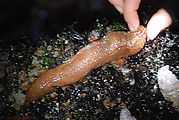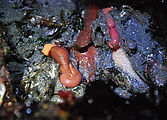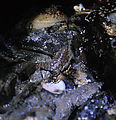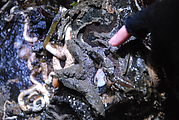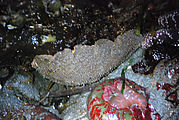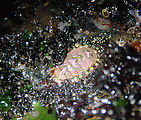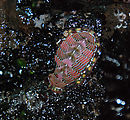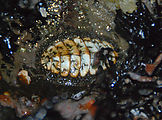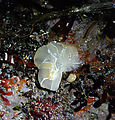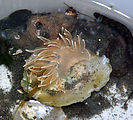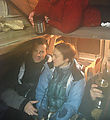Nighttime Tidepooling, December 2008
Nighttime tidepooling at Richey Viewpoint (west coast of Alki, West Seattle) on the December low tide
Anemones : Painted anemone or Christmas anemone (Urticina grebelnyi )
Crabs : Hermit crab, Graceful Decorator Crab (Oregonia gracilis), Thickclaw Porcelain Crab (Pachycheles rudis), Northern Kelp Crab (Pugettia producta), Sharpnose Crab (Scyra acutifrons ), rock crab,
Starfish : Ochre star (Pisaster ochraceus), Mottled star (Evasterias troschlii)
Tanya says, "There's a lot of talk about why they have such color variation, from yellow to orange to purple to brown. The coloration seems to be due to carotenoids and xanthophylls, which no animals are known to make themselves. It is therefore most likely that the color pattern variation is due to algae in the diets of the animals they eat."
Sea cucumbers and worms : Red Sea Cucumber (Cucumaria miniata), Spaghetti Worm, and Scale Worm
The sea cucumber squirted when we picked it up. Tanya says, "Spaghetti worms are cool - the slight red bit between the pink body and white filaments on the right-hand worm is the gills, which are currently retracted, where they do their 'breathing' (gas exchange). The white filaments get extended when they're underwater, and grope around for fallen detritus, which they move to their mouths on a mucosy conveyer belt along the length of each tentacle. Why 'spaghetti'? When the tentacles are splayed out from underneath the tube, (like I'm used to seeing them), they look like a big SPLAT of spaghetti."
Chitons : Gumboot Chiton, or Giant Pacific Chiton (Cryptochiton stelleri) — largest chiton in the world! — and Blue-Line Chiton (Tonicella undocaerulea), and Woody Chiton (Mopalia lignosa)
Nudibranchs : Frosted nudibranch or White-Lined Diona (Diona albolineata)
Warming up afterwards in the van
Thanks so much Tanya for identifying all these creatures!!!

